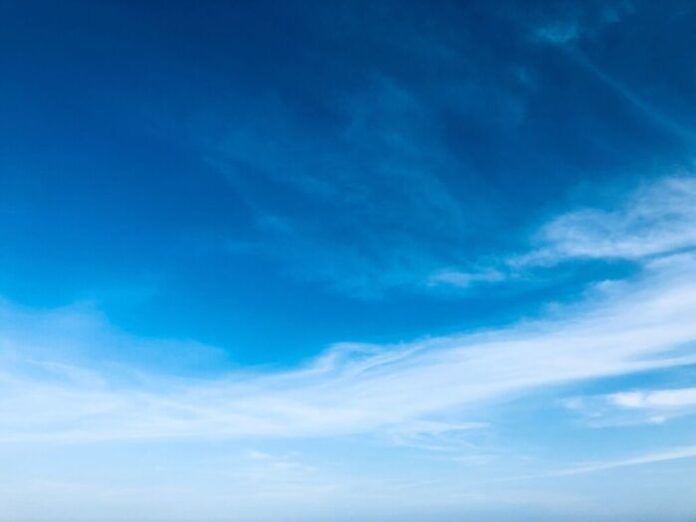
The record-breaking 2020 Antarctic ozone hole finally closed at the end of December after an exceptional season due to naturally occurring meteorological conditions and the continued presence of ozone depleting substances in the atmosphere. The 2020 Antarctic ozone hole grew rapidly from mid-August and peaked at around 24.8 million square kilometres on 20 September 2020, spreading over most of the Antarctic continent.
It was the longest-lasting and one of the largest and deepest holes since the ozone layer monitoring began 40 years ago. It was driven by a strong, stable and cold polar vortex and very cold temperatures in the stratosphere (the layer of the atmosphere between around 10 km and round 50 km altitude). The same meteorological factors also contributed to the record 2020 Arctic ozone hole.
This is in contrast to the unusually small and short-lived Antarctic ozone hole in 2019. “The last two ozone hole seasons demonstrate the year-to-year variability of the ozone hole and improve our understanding of the factors responsible for its formation, extent and severity,” said Oksana Tarasova, head of WMO Atmospheric Environment Research Division, which oversees WMO Global Atmosphere Watch network of monitoring stations. “We need continued international action to enforce the Montreal Protocol on ozone depleting chemicals. There is still enough ozone depleting substances in the atmosphere to cause ozone depletion on an annual basis,” said Dr Tarasova.
WMO’s Global Atmosphere Watch programme works closely with Copernicus Atmospheric Monitoring Service, NASA, Environment and Climate Change Canada and other partners to monitor the Earth’s ozone layer, which protects us from the harmful ultraviolet rays of the sun.
Ozone depletion is directly related to the temperature in the stratosphere, which is the layer of the atmosphere between around 10 km and round 50 km altitude. This is because polar stratospheric clouds, which have an important role in the chemical destruction of ozone, only form at temperatures below -78°C.
These polar stratospheric clouds contain ice crystals that can turn non-reactive compounds into reactive ones, which can then rapidly destroy ozone as soon as light from the sun becomes available to start the chemical reactions. This dependency on polar stratospheric clouds and solar radiation is the main reason the ozone hole is only seen in late winter/early spring.
Ozone hole at its maximum September 2020: NASA Ozone WatchDuring the Southern Hemisphere spring season (August – October) the ozone hole over the Antarctic increases in size, reaching a maximum between mid-September and mid-October (NASA Ozone Watch image of 2020 ozone hole at its September peak pictured left). When temperatures high up in the atmosphere (stratosphere) start to rise in late Southern Hemisphere spring, ozone depletion slows, the polar vortex weakens and finally breaks down, and by the end of December ozone levels have returned to normal.
However, in 2020, a strong, stable and cold polar vortex kept the temperature of the ozone layer over Antarctica consistently cold, preventing the mixing of ozone depleted air above Antarctica with ozone rich air from higher latitudes.
For much of the 2020 season, stratospheric ozone concentrations around 20 to 25 km of altitude (50-100hPa) reached near-zero values with the ozone layer depth as low as 94 Dobson Units (a unit of measurement), or approximately one third of its normal value.
The EU Copernicus Atmospheric Monitoring Service reported that ozone analyses showed the ozone hole had closed on 28 December.
Every season, the appearance of the ozone hole and its evolution is monitored by means of satellites and a number of ground-based observing stations. Characteristics of the ozone hole, interactive maps, timeseries, current state and forecast are being prepared and monitored by the large ozone community through the services of different organizations such as the Copernicus Atmosphere Monitoring Service (CAMS), NASA ozonewatch programme, NOAA, KNMI, ECCC and others.
The Montreal Protocol on Substances that Deplete the Ozone Layer is the landmark multilateral environmental agreement that regulates the production and consumption of nearly 100 chemicals referred to as ozone depleting substances (ODS). Since the ban on halocarbons, the ozone layer has slowly been recovering and the data clearly show a trend in decreasing area of the ozone hole – subject to annual variations.
The latest WMO /UN Environment Programme Scientific Assessment of Ozone Depletion, issued in 2018, concluded that the ozone layer on the path of recovery and to potential return of the ozone values over Antarctica to pre-1980 levels by 2060. This is because of the long lifetime of the chemicals in the atmosphere.



































